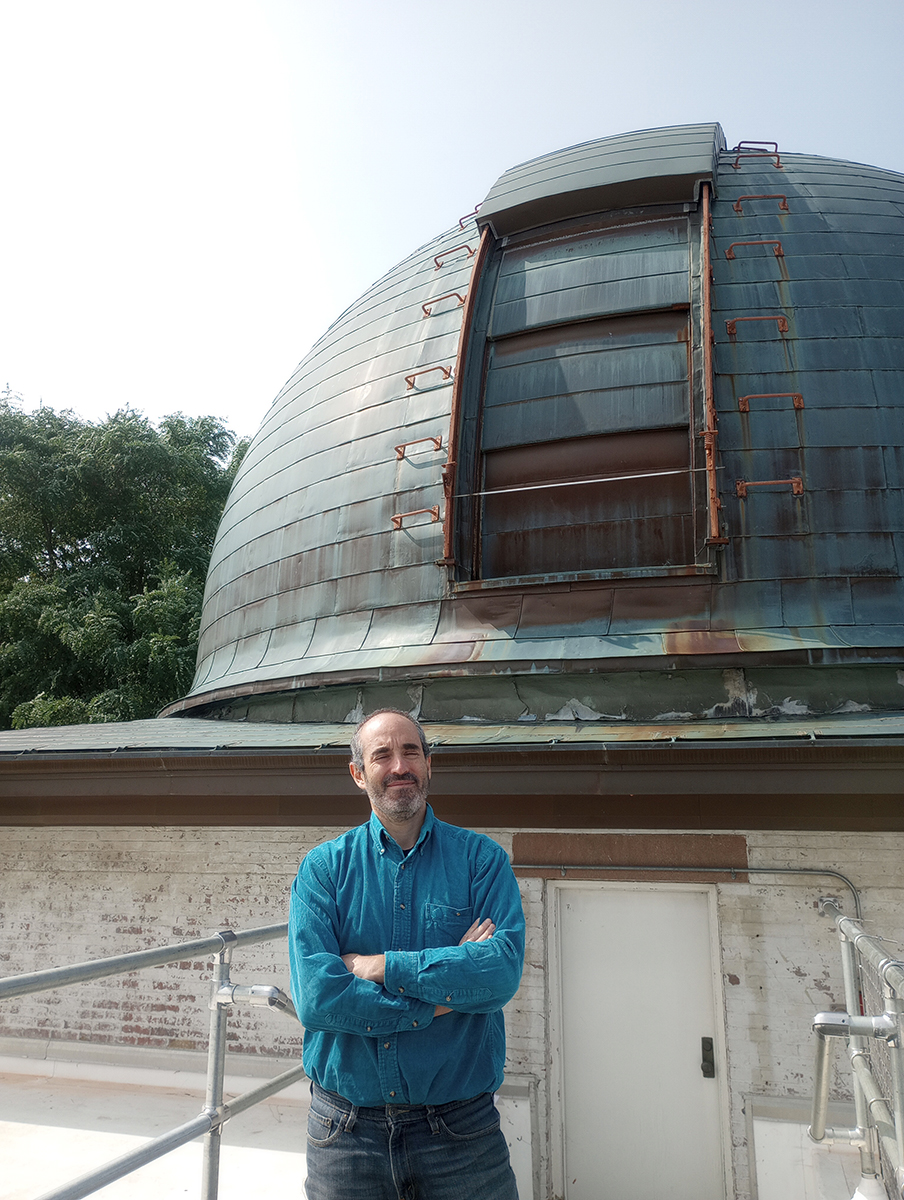 Meet a Scientist A closer look at the people behind the research
Meet a Scientist A closer look at the people behind the research
Gonzalo Gonzalez Abad is a physicist who wants to make a difference
Career paths can sometimes seem obvious. Other times, when you stop and look back, you have traveled down a not-so-straight road.
Gonzalo Gonzalez Abad, a physicist at the Smithsonian Astrophysical Observatory (SAO), had not heard of the Smithsonian until he applied for a job there. Gonzalez Abad grew up as the son of two teachers in a small village in Spain, and he did not learn English until he moved to the UK for graduate school. He wanted to work where some of the best science in the world was taking place, so he sought jobs in America, and the SAO, part of the Center for Astrophysics | Harvard & Smithsonian, was calling his name. He became a fellow at the Smithsonian in 2011, and now, as a staff scientist, he is on the science team behind the TEMPO mission (Tropospheric Emissions: Monitoring of Pollution) studying air pollution using satellites.
The TEMPO instrument launched into space in April 2023 to understand the sources, movements, and impacts of air pollution in North America. After a decade of development, the probe became operational in October 2023. Now researchers around the world are using its data to learn more about the composition of pollutants in our atmosphere.

It wasn’t a love of space that brought Gonzalez Abad to SAO. “I just wanted to do something with a social application,” he said.
“I wasn’t drawn to climate research or atmospheric chemistry or satellites. In fact, I was interested in plasma physics because of its relationship to fusion energy [a method for generating clean energy].” He also applied to graduate programs in materials science [the study of the physical property of materials] because of its role in the development of solar cells for generating solar power.
Of all the job applications he submitted, of all the interviews he participated in, it just so happened that the supervisor he ended up with was studying how to measure atmospheric gases using satellites. “I would have been equally happy doing anything else. More interesting than the science itself is the question.” Gonzalez Abad’s question is, “How can we use science and technology to improve life on this planet?”
After graduate school, Gonzalez Abad was very excited to move to the United States. He saw the U.S. as setting the global scientific standard. “Some of the best remote sensing science was done here, and I was always curious about the U.S. The U.S. shaped the culture of the Western world in 20th century Hollywood movies, music, etc. Countries like Spain and France have their own strong cultural heritage, but starting in the 20th century, U.S. influence in my home country is everywhere. I was excited to learn about the source of this. For me, part of adjusting to the Smithsonian was learning the science, but part was getting to know this cultural lighthouse of the world.”
The work on TEMPO kept him in the U.S. longer than planned on his winding road. “When I started here, I was just a very junior post-doc [my first job after graduate school]. I thought I’d stay here for two or three years and move somewhere else, as post-docs typically do. I thought, ‘people don’t stay at one institution forever.’” But since the TEMPO project was starting up and they needed more scientists, Gonzalez Abad secured a permanent position, and among other projects, he has been working on TEMPO ever since. “I’m glad it took so long to deploy, because it gave us a lot of time to prepare. That’s why the launch and first light turned out so well.”

Gonzalez Abad’s life is not all physics all the time. In his free time, Gonzalez Abad is drawn to music. He plays the clarinet for a band “of Portuguese migrants,” he said, which he got involved in soon after he moved to Cambridge, new to the United States. One day, he found himself wandering around the city, walking to Symphony Hall. On the way, he heard some music coming out of a brick-and-mortar house in East Cambridge. “I walked into the Filarmonica Santo Antonio Cultural Center and asked what they were playing, and I said, ‘Would you take a Spaniard?’ They said, ‘OK, sure.’” Gonzalez Abad has been playing with them ever since. “I was lucky to find something that’s quite similar to Spanish culture,” he said. The band plays a range of musical styles, including Soussa’s marches, Portuguese music, and covers of pop singers like Lady Gaga.
If you ask Gonzalez Abad to perform classical music at a theater in front of a crowd, he might accept that challenge, but he is not going to hit the late night tv circuit to talk about science. Rather, Gonzalez Abad has finally found his scientific happy place in his office, crunching numbers and developing conclusions about the pollutants in our atmosphere to inform the world on how to keep us breathing a little easier. The TEMPO project allows Gonzalez Abad to work with a range of science disciplines and make a social impact—his goals realized.
Meet a Scientist tells the stories of the people behind the research, the discoveries they make, and their inspiration. We explore their passions, celebrate their contributions, and look more closely at how questions become solutions that can inform environmental policy, spur technological innovation, and promote community and collaboration across the globe.

